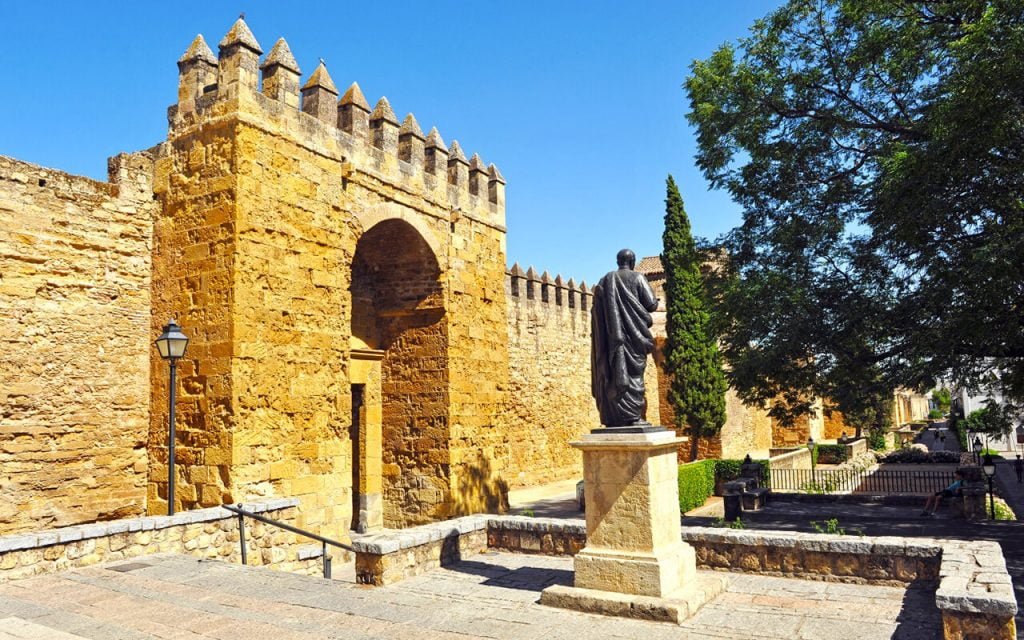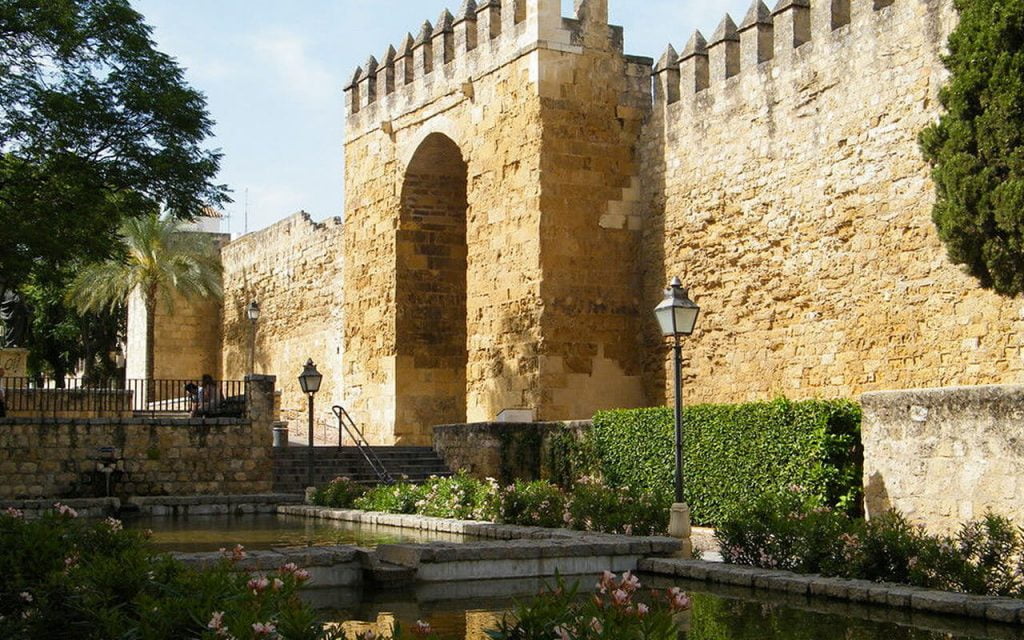Índice Contenido
The Puerta de Almodóvar is a walled entrance built during the Muslim rule of Cordoba. It is located in the western wall of the city and is popularly known by that name for having connected with the road to the nearby town of Almodóvar del Río. Previously, it was called Bab al-Chawz or “The Gate of the Walnut Tree” as well as “The Gate of Badajoz”.
Location of the Almodovar Gate of Cordoba
The Puerta de Almodovar is currently located at the intersection between Calle Caiurán and Paseo de la Victoria, having right next to it the main building of the Red Cross and the 5-star Hotel Eurostars Palace. The gate serves as the entrance to the old part of the city of Cordoba, known as La Juderia.
How to get to the Almodovar Gate of Cordoba
You can reach the Puerta de Almodóvar on foot from most of the monuments of Cordoba, although there are also bus stops and cab ranks.
How to get to the Puerta de Almodovar from the Mosque
How to get to the Puerta de Almodóvar from the Plaza de las Tendillas
How to get to the Puerta de Almodóvar from the Roman Bridge
How to get to the Puerta de Almodovar from the Hotel Cordoba Center
How to get to the Puerta de Almodovar from the Eurostars Hotel

History of the Almodovar Gate
The Almodóvar Gate, as we know it today, has Muslim origins, although it was reformed by the Christians in the 14th century. It consists of two towers that connect the gate through an arched bridge. It was built with ashlar masonry, brick and ashlar. Despite the reforms (the last in 1802), the battlements and the parapet have been preserved almost completely, adding only an inner door.
Just beyond the gate, we find the Jewish Street, one of the most iconic of the city where monuments such as the Synagogue, the Casa Sefarad and the Casa Andalusi and the Plaza de Maimonides are located.
In the 20th century a sculpture of Lucius Annaeus Seneca was added to the square in front of the Gate. This Cordovan philosopher and playwright was born in 4 B.C. during the Roman domination, becoming part of the court of Emperor Nero and leaving a wide cultural legacy. He was a representative of stoicism, a philosophical current that advocated dispensing with material goods to achieve happiness, basing the lifestyle on self-control and tolerance. The statue is the work of the artist Ruíz Olmos and was installed by the local town hall in 1965.

Frequently Asked Questions about the Puerta de Almodovar
When was the Almodovar Gate built?
The gate is of Muslim origin, probably from the mandate of Abd al-Rahman I, although its current appearance dates from a Christian reform of the fourteenth century.
What was the function of the Almodovar Gate?
The Almodóvar Gate was part of the western access to the city, being bounded by the main wall. It allows the direct entrance to the old part of the city and joined with the road to the town of Almodóvar del Río.

